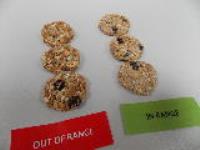 Add My Company
Add My Company
Sign In

Is it always bad practise to have variations in colour for all food products?
When it comes to food production, most companies want to ensure that there are no variations in colour, as this shows brand consistency and quality. Take for example a packet of biscuits, if each biscuit was a different colour, you would question the quality of the product and whether some biscuits were either burnt or undercooked.
However, the above is not always the case. With all the recent stories in the media about the importance of leading a healthy lifestyle, we are becoming more and more conscious about putting the right types of foods inside our bodies. Food that is natural, healthy and actually good for us.
Therefore, if a company wants to show customers that their food is indeed natural and healthy, one way of doing this is to show variations in colour. If you opened a pack of nuts that were 100% natural and had no additives or preservatives, you would expect them to be different shapes, colours and sizes as illustrated by the image of Paenuts below.
The answer to the question above, “is it always bad practise to have variations in colour for all food products?” is no because it all depends on the product.
Our DigiEye System not only accurately measures the colour of foods so companies know exactly what the correct cooking/baking conditions are but also collects and processes data which offers additional benefits including speeding up quality control, sustaining product integrity and reducing wastage.
For more information on Is it always bad practise to have variations in colour for all food products? talk to VeriVide
Enquire Now
List your company on FindTheNeedle.
